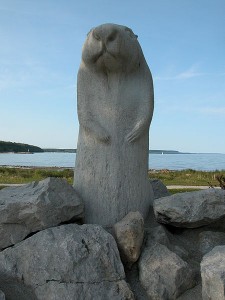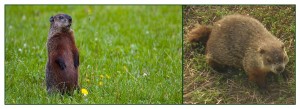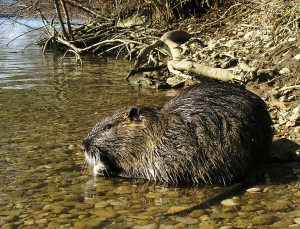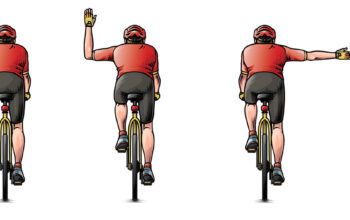February 2nd, Day of Weather Predicting Rodents

The celebration of Groundhog day began with a large German population in south and central Pennsylvania around the 18th century. The day is usually a social event, consisting of speeches, plays and lots of good food, basically like a typical day here in the greater New Orleans area. Groundhog Lodges in Pennsylvania carry on their old tradition of “fersommlinge” today, an event in which only the Pennsylvania German dialect is spoken.
The date of the celebration in relation to predicting weather patterns goes back much further. In ancient European weather lore, the badger or sacred bear would be the one to indicate the change of season. This custom of weather predicting rodents may have originated in conflicts over merging calendrical systems. Some ancient traditions would mark the beginning of spring to when the sun first began to make progress against the night, such as Imbolc on February 1st. Other ancient traditions believed that spring had not officially begun until the day was once again equal with night, at the Vernal Equinox. Hence the groundhog, or badger, was used as a symbol of compromise, an innocent bystander that would decide the fate of spring. If it is cloudy and he emerges from his burrow spring would begin; if it is sunny he will see his shadow, become frightened, and winter would continue until the Equinox. Goundhog Day organizers claim that the rodent’s forecast is 75% to 90% accurate, but there is some speculation on these statistics.
The groundhog is also known as a woodchuck, whistle-pig and land-beaver. It is a rodent of the family Sciuridae, belonging to a group of large ground squirrels called marmots. A lowland creature widely distributed in North America, it is common in large open plains to hear them whistling and barking to other members of their colony.

While the northeast observes this well known tradition with the groundhog, in the south we have adapted it for the nutria, as the groundhog does not live here. The Audubon Zoo’s Swamp Exhibit is home to T-boy Nutria, our local weather forecasting rodent. Last year, T-boy didn’t see his shadow and we had an early spring. As most people that live here know however, another thing we don’t really share with the northeast is seasons. I remember the crawfish being plentiful last year, so maybe T-boy Nutria will tell us that we’ll have another great crawfish season. The nutria, also known as the Coypu, was first introduced in the United States in California in 1899. In the 1930’s, they were brought to Louisiana for the fur industry, and the animals spread into the wild after the 1940’s due to harsh storms that damaged the animals’ enclosures.

Coypu: aka Nutria, River Rat



